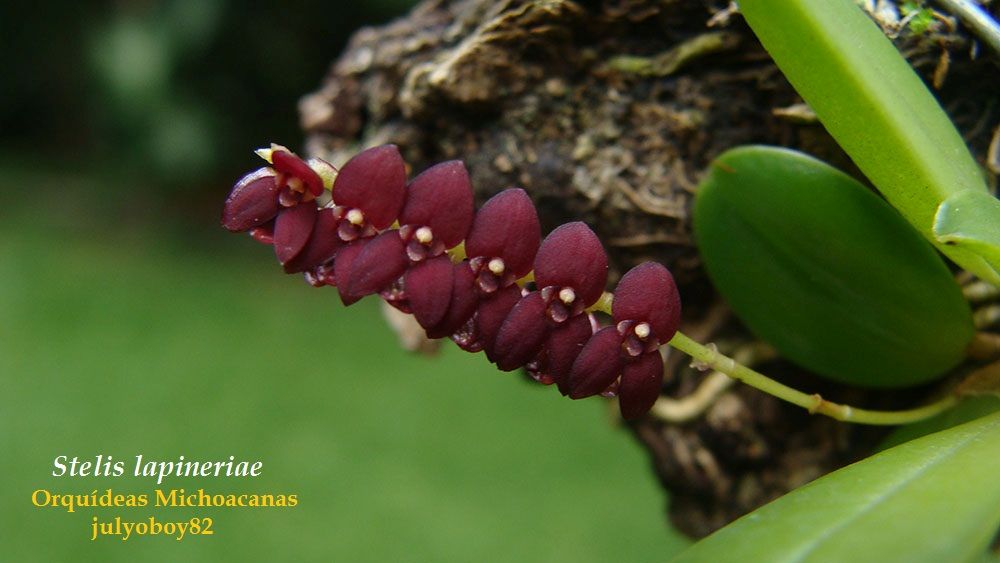

Stelis lapinerae Soto Arenas & Solano 2014 SECTION Stelis
Photos by © Julio Valdez Partida
Photo courtesy of Noble Bashor
TYPE Drawing by © R Solano



Common Name The La Pinera Stelis
Flower Size .08" [2 mm]
Found in Michoacan state of Mexico in pine-oak or oak forests within rocky areas, 1800 to 1900 meters a miniature sized, cool growing, caespitose epiphyte with erect, fascicled, terete ramicauls completely covered by tubular, scarious, obtuse, carinate, mucronate sheaths slightly widened towards the apex and carrying a single, apical, erect, channeled, arching, oblanceolate, rounded, shortly bilobed at apex, with a minute mucro between lobules, gradually attenuated below into the conduplicate petiolate base leaf that blooms in the fall on an erect, arising through a conduplicate, triangular, acute, scarious, carinate spathe from an annulus at the apex of the stem, peduncle as long as leaf, straight, terete, 1" [2.5 cm] long, provided with two or three bracts similar to the floral bracts, the lower one hidden within the spathaceous bract, racemose, rachis straight, longer than leaf, 3.8 to 5" [9.5 to 12.5 cm] long, distichously arranged, overlapping, mostly simultaneously 9 to 15 flowered inflorescence with s obliquely infundibular, obtuse, revolute at the margins, as long as the pedicel floral bracts and carrying red wine colored flowers.
"Stelis lapinerae was seen for the first time in the 1970s when Noble Bashor collected it near Uruapan. From these specimens are the only known photos showing an inflorescence superficially similar to Lepanthopsis: flowers perpendicular to the rachis, sepals extended to form a platform, petals and lip reduced and thickened, and apical anther. In 2005 Miguel Soto collected live specimens of this species near Paztcuaro, which flowered in cultivation. Once analyzed, it was evident that it was a new species of Stelis. The most similar species is Stelis ciliaris; however, it is differentiated by larger plants, more floriferous raceme, resupinate flowers, ciliate sepals, and because its allopatric distribution in low to moderate elevations along the slopes bordering the Gulf of Mexico (Solano, 1993). Another similar species, at least in habit and because it is present in that region of Michoacan, is Pleurothallis rufobrunnea, but it has a raceme with looser, smaller, and shortly tubular flowers, and differently formed petals and lips." Solano & Dietz 2014
Synonyms
References W3 Tropicos, Kew Monocot list , IPNI ;
* Phytotaxa 158: 260 Solano & Dietz 2014 drawing fide;
--------------------------------------------------------------------------------------------------------------------------